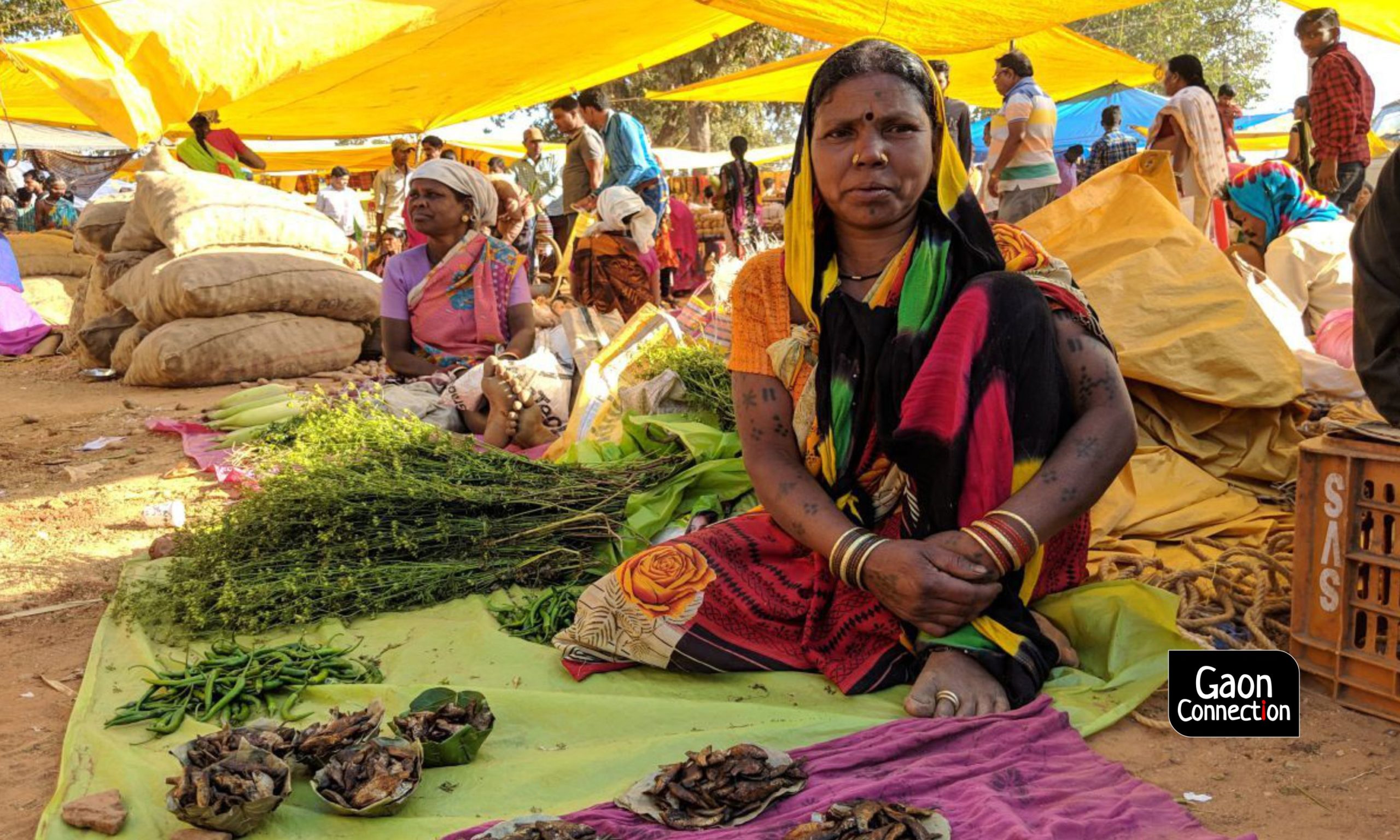Having read about the colourful weekly markets in the more remote tribal areas, I had promised myself that I would visit one someday.
The promise came true when I reached Narayanpur in Bastar, Chhattisgarh, and strolled through its vibrant market.
At three in the afternoon, it was a riot of colours and sound of tribal inhabitants of villages nearby, selling and buying an array of things.
Men, women, children, walking, on bicycles, chattering in groups, huddled around some bargains lent the haat (weekly market) the air of a carnival. They carried refreshments or bought them right there. An elderly woman with a silver hunsuli around her neck drank sulfi from a cup fashioned out of a leaf. It is toddy that can be had both fresh and fermented, she explained.
Another woman sat beneath a yellow tarpaulin selling coriander leaves and dried fish called suksi (dried fish). People, after successfully concluding the deal, triumphantly carried the fish wrapped in leaves, away. She said she caught the fish from a pond in Kondagaon and, after drying it brought them to the market to sell. The suksi is prepared by smoking the fish and then spreading it out to dry. Suksi keeps good for several days.
Elsewhere, pottery items were flying off the ‘shelves’. The shoppers and the shopkeepers were mostly women in colourful sarees and silver jewellery. The utensils had intriguing names like mahad, ghaghri, kanji, parai, phorai, harhia, kanoji…
While there are the inevitable plastic and steel utensils, what caught the eye were the beautifully handcrafted bamboo baskets. The bigger baskets were the jhanwa for storing grains, the tokri was to hold vegetables and mahua while the smallest basket was fondly named the buti. Neem leaves are placed upon the baskets and above them the grains which then remain safe for many days.
The vegetables sold in the market were locally grown and abundant. There were fresh greens with names such as karmotta bhaji, chaati-bhaji, kanda bhaji, chunchunia bhaji, khattha bhaji, jirrah bhaji and bohar bhaji.
Villagers sold their mahua and other food grains and with the money bought themselves other things they needed. Sometimes they bartered. They drew joy from what they sold and what they bought. Their laughter and happy conversations rang in my ears long after I left the haat.







Divendra Singh made this visit to the weekly haat in Bastar in April 2018.


















